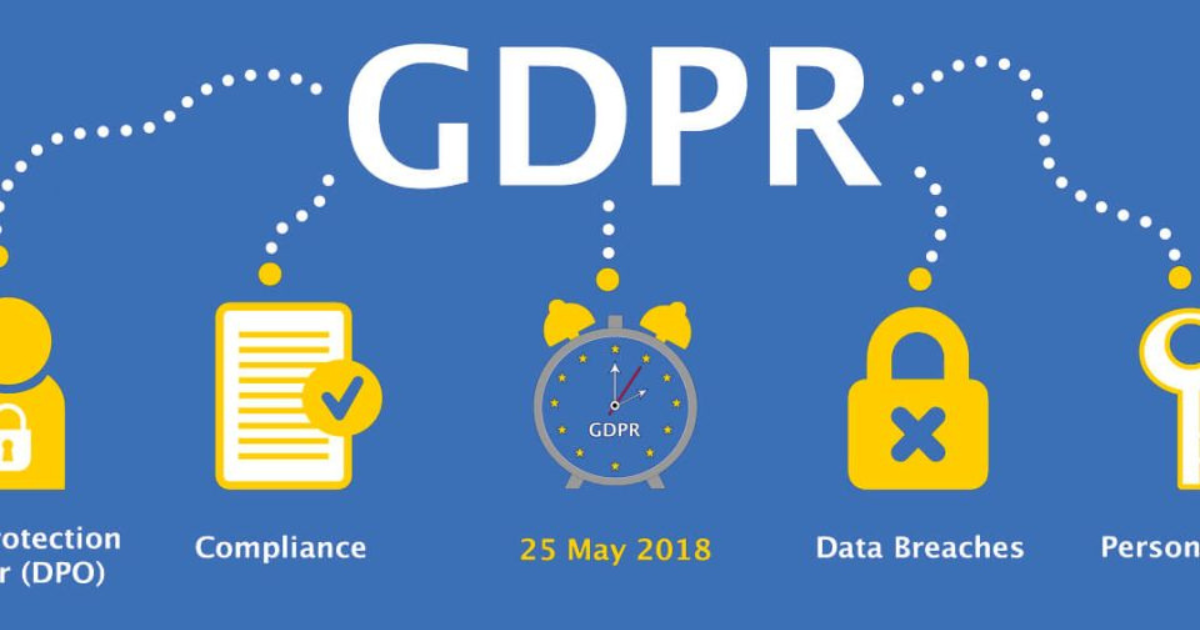Understanding the Need for GDPR Compliance on Websites
Understanding why GDPR compliance is important for websites is crucial for businesses today. Following GDPR, which stands for General Data Protection Regulation, is necessary for protecting user data. Making sure your business complies with GDPR is essential for handling user information online.
It ensures that user data is protected and builds trust between businesses and their customers. GDPR compliance changes how businesses manage and protect user information. Following these regulations shows that you are committed to user privacy and data protection.
Also, not complying with GDPR regulations can lead to severe penalties and damage a company’s reputation. If you don’t comply, you risk getting fined and losing the trust of your customers.
Understanding how important GDPR compliance is can help you avoid legal consequences and maintain your credibility in the market.
In summary, understanding the importance of GDPR compliance encourages a responsible approach to handling user data. It’s not just a legal obligation, but a commitment to protecting the rights and privacy of your users. Following GDPR principles not only reduces risks, but also builds confidence among users and strengthens the relationship between businesses and their audience.
Making Sure Your Website Complies with GDPR Standards
Data Protection Principles
Following data protection principles is the foundation of GDPR compliance for websites. These principles explain how businesses handle and process user information online. They provide a framework for keeping user data secure and confidential.
One important principle is the fair and transparent processing of user data. Businesses must have a valid reason for collecting and processing user information. Transparency in data processing means that businesses must clearly communicate how the data is used so that users are well-informed.
Another crucial principle is limiting data processing to specific purposes. Businesses should only collect the data that is necessary for those specific purposes and avoid collecting excessive data. This ensures that user data isn’t used in ways that go beyond what they agreed to, which respects their privacy.
Additionally, making sure data is accurate and up-to-date is important. Businesses should take steps to keep user data accurate and update it regularly. Reviewing and updating user information prevents mistakes and maintains data integrity, which aligns with GDPR guidelines.
In summary, following these data protection principles is fundamental to GDPR compliance. They provide a framework for handling user data responsibly and ethically. Following these principles not only ensures compliance, but also builds trust and credibility with users by prioritizing their privacy and data security.
User Consent Mechanisms
Implementing effective ways for users to give consent is crucial for GDPR compliance on websites. Getting explicit and informed consent before processing user data is a basic requirement. User consent should be freely given, specific, and able to be withdrawn, which follows GDPR standards.
Having clear and accessible ways to request consent is essential for compliance. Businesses must present consent requests in a way that is easy to understand. Being transparent about why data is being collected builds trust and compliance.
Giving users options for consent allows them to choose what types of data they are willing to share. Providing choices empowers users to decide what data processing activities they agree to, respecting their preferences.
Furthermore, making it easy for users to withdraw consent is crucial. Users should have the ability to revoke consent just as easily as they gave it. Businesses must provide clear instructions on how users can withdraw consent to comply with GDPR regulations.
In summary, implementing user consent mechanisms that align with GDPR principles is vital. It’s not just about getting consent, but making sure it’s given freely and easily manageable. Following these mechanisms shows a commitment to user privacy and strengthens GDPR compliance on websites.
Managing Data Processing and Storage
Managing how data is processed and stored aligns with GDPR standards and keeps user data secure. Businesses must evaluate how they handle and store user information to effectively comply with regulations. Transitioning to compliant data processing and storage practices is crucial for website operations.
Implementing security measures to protect user data during processing is fundamental. Encrypting sensitive information and limiting access to authorized personnel reduces risks. Keeping data safe ensures data integrity and confidentiality, following GDPR principles.
Regularly reviewing data storage practices prevents keeping unnecessary user information. Deleting outdated or irrelevant data minimizes risks and maintains compliance. Efficiently managing data storage streamlines operations and reduces the amount of stored data, which aligns with GDPR guidelines.
Additionally, taking measures to quickly respond to data breaches is necessary. Establishing incident response protocols ensures immediate action in the event of a security breach. Reacting quickly and minimizing potential damage complies with GDPR requirements.
In summary, effectively managing data processing and storage is fundamental to GDPR compliance. It’s not just about handling data, but also keeping it secure throughout its lifespan. Following these practices ensures user data protection and builds trust with the audience.
Implementing Privacy Policies and Notices
Creating clear and comprehensive privacy policies and notices is crucial for GDPR compliance on websites. These documents inform users about how their data is handled and what their rights are. Writing concise and easy-to-understand policies ensures transparency and compliance.
Privacy policies should explain what types of data are collected and how they are used. This transparency builds trust with users and follows GDPR requirements. Communicating data processing practices in privacy notices ensures users can make informed decisions.
Additionally, making sure privacy policies and notices are easily accessible is important. Placing them prominently on websites helps users find important information easily. Presenting these documents in a user-friendly way improves the user experience and compliance.
Regularly updating and reviewing privacy policies maintains their relevance and compliance.
Adapting policies to reflect changes in data processing practices or regulations is necessary.
Keeping these documents up-to-date shows a commitment to user privacy and GDPR compliance.
In summary, creating and maintaining clear privacy policies and notices is vital. They are not just legal requirements, but also tools to empower users and build trust. Following these practices respects user rights and strengthens GDPR compliance on websites.
Handling User Rights and Requests
Addressing user rights and requests is essential for GDPR compliance on websites. Recognizing that users have the right to access, correct, or delete their data is crucial. Honoring these requests ensures compliance and respects user autonomy.
Establishing efficient processes to handle user requests is necessary. Responsively addressing requests for access or rectification shows a commitment to user rights. Fulfilling these requests promptly aligns with GDPR regulations.
Furthermore, providing clear instructions on how users can exercise their rights is important. Transparent guidance helps users navigate their data rights effectively. Simplifying the process builds user confidence and compliance.
Regularly reviewing and improving procedures for handling user requests maintains efficiency. Adapting processes to ensure smooth user interactions enhances compliance. Staying agile ensures readiness to address user requests promptly.
In summary, handling user rights and requests is a foundation of GDPR compliance. It’s about respecting user autonomy and ensuring they have control over their data. Following these practices builds trust and aligns websites with GDPR standards.
Key Practices for Maintaining GDPR Compliance on Websites
Following these key practices ensures consistent GDPR compliance for websites that handle user data. Regular audits and assessments guarantee ongoing adherence to regulations. Continually reviewing data handling processes shows a commitment to compliance.
Educating staff about GDPR principles and best practices creates a culture focused on compliance. Training sessions and awareness programs promote a proactive approach to data protection. Having a knowledgeable workforce reduces risks and upholds compliance standards.
Regularly updating and improving data protection measures demonstrates a commitment to evolving compliance. Adapting to emerging regulations and technological advancements maintains relevance. Continuously refining practices aligns websites with evolving GDPR standards.
Lastly, fostering transparency in data handling practices builds trust with users. Openly communicating about data usage creates confidence and compliance. Establishing transparency creates a positive perception, strengthening user trust and compliance.
In summary, implementing these practices maintains ongoing GDPR compliance. They are not just guidelines, but fundamental steps to protect data. Following these practices builds trust and credibility while aligning websites with GDPR standards.
Contact Softlink Options TODAY!



